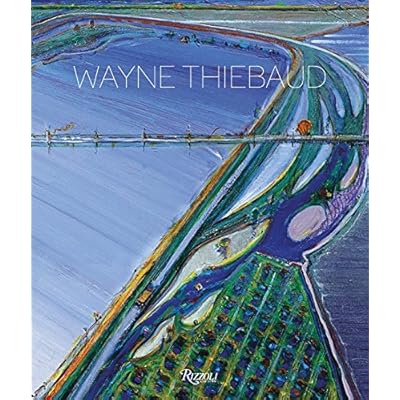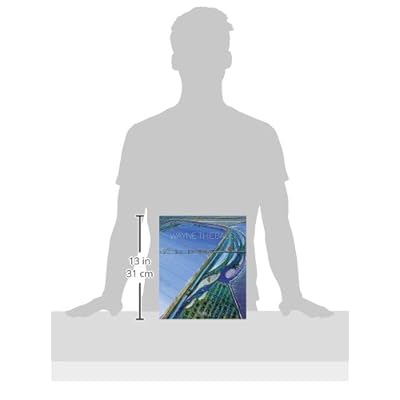Wayne Thiebaud
Category: Books,New, Used & Rental Textbooks,Humanities
Wayne Thiebaud Details
Review "[Wayne Thiebaud] is required reading for those who have a healthy appetite for provocative art."-BLOOMBERG BUSINESS"This comprehensive monograph of more than 200 illustrations can literally be considered eye candy. American artist Wayne Thiebaud is famed for his brightly colored canvases of cakes, diner pies, pastries, ice cream cones, candy and brightly colored gumball machines. . . Often aligned with the Pop Art movement of the '60s with which he came of age as an artist, Thiebaud has also painted lipsticks, women's shoes and toys in the same simple but ideal manner, as if they were Platonic essences. Whether still lifes or landscapes, Thiebaud's paintings are akin to visual Prozac; you simply cannot be in a bad mood looking at them."-KANSAS CITY MAGAZINE"While Thiebaud is best known for his heavily pigmented still lifes of cakes, pies, and candies, [this] book shows his broader range, from vibrant landscapes depicting highways and farmland to portraits of solitary figures. . . The texts examine Thievaud's influences as well as his impact on the art world and the individual viewers of his work."-ARCHITECTURAL DIGEST Read more About the Author Kenneth Baker has been the resident art critic at the San Francisco Chronicle since 1983. Nicholas Fox Weber is a cultural historian and executive director of the Josef and Anni Albers Foundation. Karen Wilkin is an independent curator and art critic based in New York. John Yau is an American poet and critic who lives in New York. Read more

Reviews
This is a review for the art book “Wayne Thiebaud” (2015) edited by Ellen R. Cohen with essays by Kenneth Baker et al.This is a beautifully produced art book. The production quality is very high. It is printed on good paper between strong covers and encased in a well-made slipcase. There are hundreds of color plates and the work included dates from the 1960s to the 2000s. The book is large and heavy, but it is a treat to leaf through the pages and absorb Thiebaud’s painterly journey through the last sixty or so years. Fans of Thiebaud’s paintings won’t be disappointed by the pictures.Unfortunately, the four essays placed at the front of the book are much less inspiring. I know I am not the only reader who is dismayed at the state of art writing in our era. The first essay by Karen Wilkin tries to draw parallels between Thiebaud and Chardin which seems a stretch when better comparisons could be made with Raimonds Staprans or Richard Diebenkorn.Thiebaud loves paint and none of the writers draws attention to the fact that contemporary painters have at their disposal a far greater range of colors than the Renaissance masters ever did. Industrial chemistry has given us those beautiful colors that Thiebaud makes such good use of in his paintings of the Sacramento Delta. This I think points to the problem with most contemporary Art Critics. They don’t know much about studio practice and don’t see it incumbent upon them to ask to interview the artist in his studio and talk about things like color and design. They prefer to hide behind arcane art theory and treat artists as creatures to be squeezed into classifications, like plants or insects. They are writing for each other and angling for the next academic or museum post.The other essayists in this volume aren’t really any better at illuminating what Thiebaud is all about. They don’t seem to notice what is obvious to the general reader who makes her way patiently through this book. The late figure paintings of women have become almost cartoonish. This is a huge change from the forensic looking that the artist did in the sixties.Nicholas Fox Weber states in his essay that the paintings of food make him ravenous, that they make the viewer long for what is reassuring. I’m sorry. The food paintings don’t strike this viewer as appetizing. That does not seem to be what he is pushing us to see. They are about the object-ness of mass-produced food, the industrial repetition of food goods. The cake and pie slices point their sharpness towards us. It’s all mildly aggressive. This is not food porn, this is food painted as nausea inducing.John Yau’s essay is somewhat better. At least it talks about the painted surface and he has clearly done some research even if he has not spoken to the artist. However, he doesn’t say anything new about the artist and can’t resist the urge to display his art history credentials. To see what Yau is capable of why not read his essay on Hyperallergic about Amy Bennett. That is a helpful essay.I couldn’t read Kenneth Baker’s essay. The meandering sentences lose the reader to the extent that she has to go back to the beginning to get a glimmer of what the writer is trying to say. It’s not the worst piece of art writing, but it is far from helpful or enjoyable.This book is worth buying, in spite of the self-serving essays. The reproductions are very good and as you make your way through the book, you will come to your own conclusions about how Thiebaud’s work has evolved and what his project really is. I hope you enjoy it. I loved the paintings. I paid about $95.00 in 2019. I think it will go up in value, if that is important to you.



